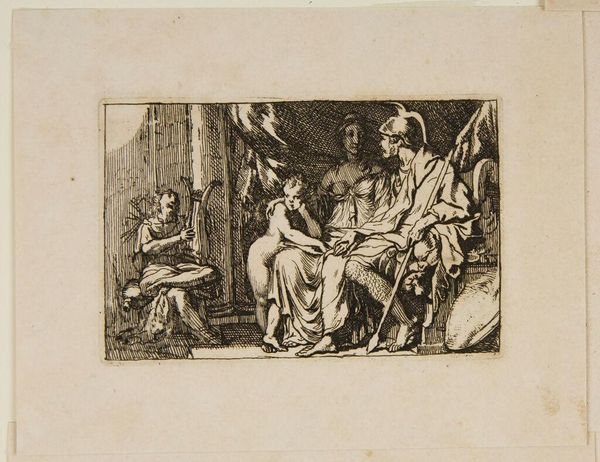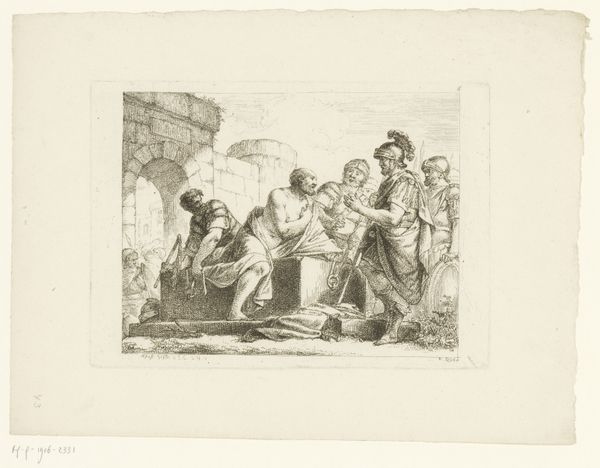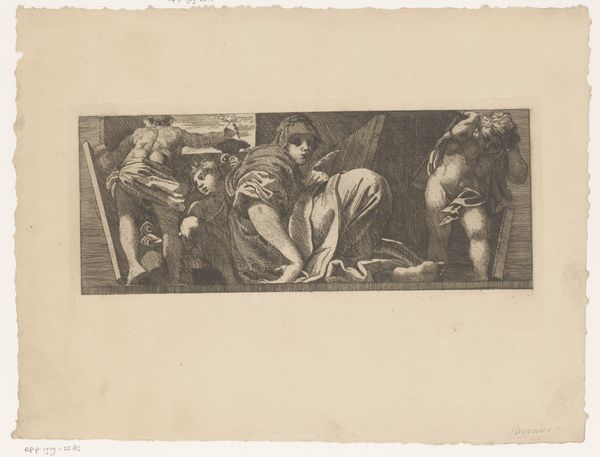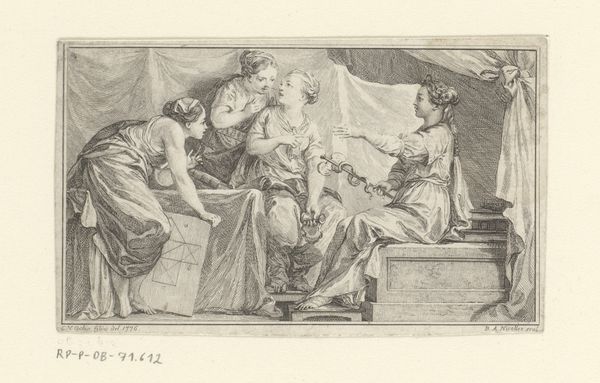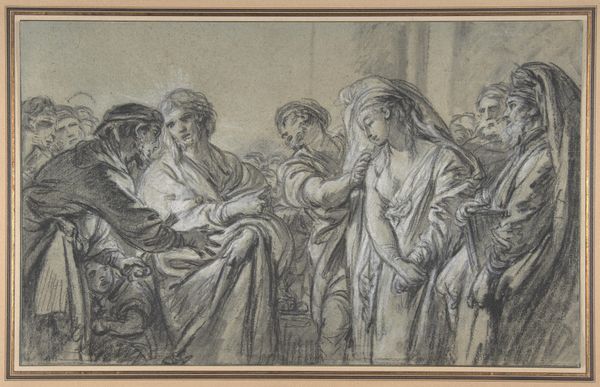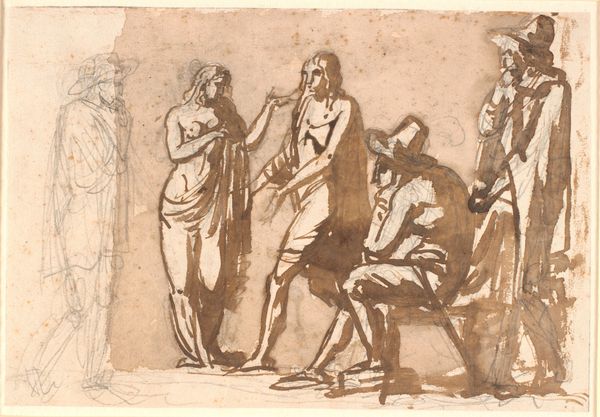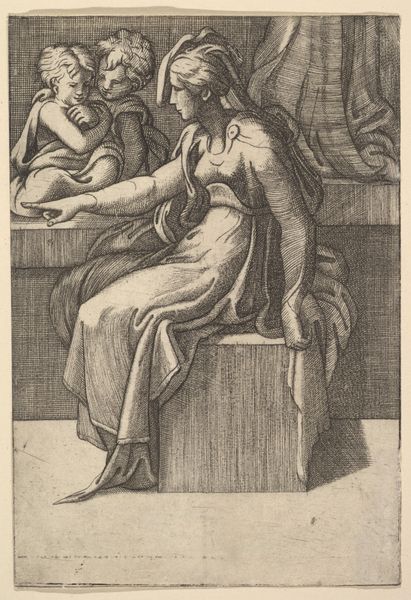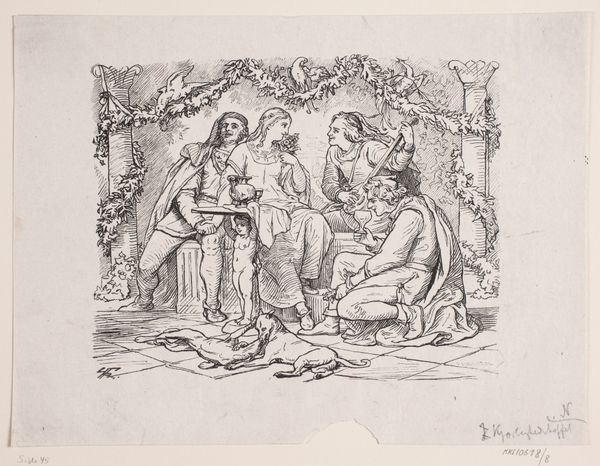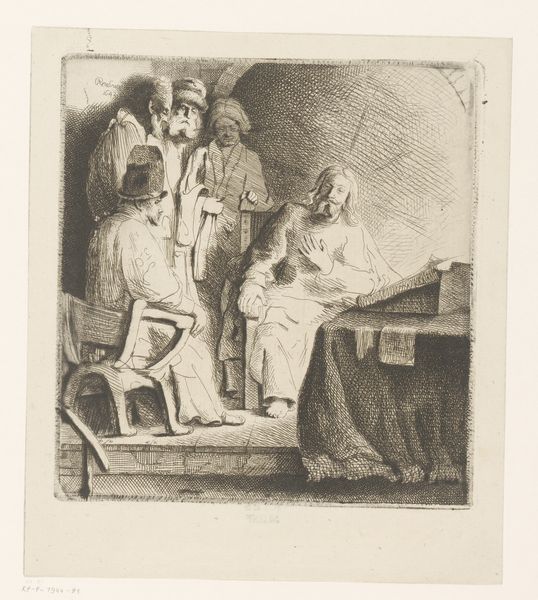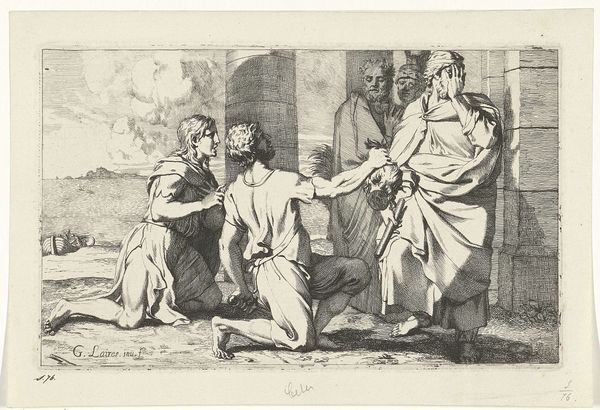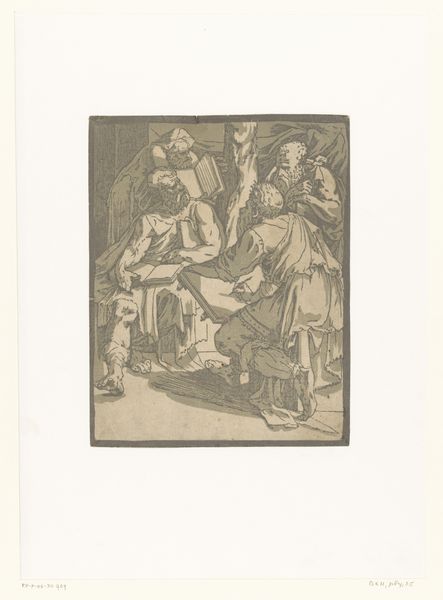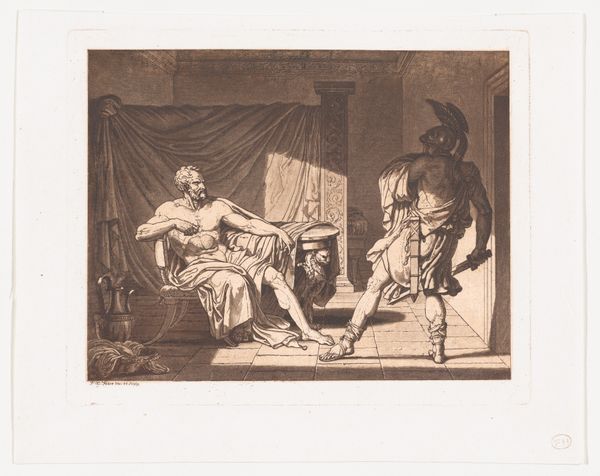
drawing, ink, engraving
#
drawing
#
narrative-art
#
baroque
#
pen illustration
#
pen sketch
#
figuration
#
ink
#
history-painting
#
engraving
Dimensions: height 68 mm, width 103 mm
Copyright: Rijks Museum: Open Domain
Editor: This is "Aeneas vertelt Dido over zijn lotgevallen" by Gerard de Lairesse, made in 1668. It's a drawing, ink and engraving on paper, currently held at the Rijksmuseum. It's a highly detailed pen sketch, isn't it? It's hard to believe that such textures and contrasts can be rendered by just one type of material! What stands out to you the most about this piece? Curator: It’s fascinating to consider Lairesse's choice of engraving for this subject. He depicts a legendary scene of power, love and war, a high-art subject usually executed via painting. By rendering it as an engraving, it invites a material reading of accessibility, both through the relatively lower cost of production and reproduction. It challenges the traditional notion of luxury surrounding oil on canvas, bringing stories from high society to other members of society via reproducible engraving. How does it alter your understanding to see this scene in such an approachable format? Editor: It does make the epic more… democratic, in a way. So the *materiality* of engraving reframes what kind of audience would consume this subject matter? It's quite striking to consider, especially since we know that Baroque art and engravings often promoted high society taste, nobility, and the wealthy! Curator: Precisely. The material here disrupts conventional class boundaries. Lairesse presents this classic narrative but through the material means of an engraving, inviting critical assessment of the culture that consumes it, no? Are we looking at an artist democratizing myth, or simply adapting to economic realities of print production? What do you think? Editor: I guess, that even through choosing an affordable artistic product he can still expose more people to his art? Thinking about the impact and reach the material brings definitely changes my views a lot. Curator: Indeed. The piece becomes as much about *who* gets to see the art, as the scene depicted *in* the art. Something to keep in mind whenever approaching art from this period!
Comments
No comments
Be the first to comment and join the conversation on the ultimate creative platform.
